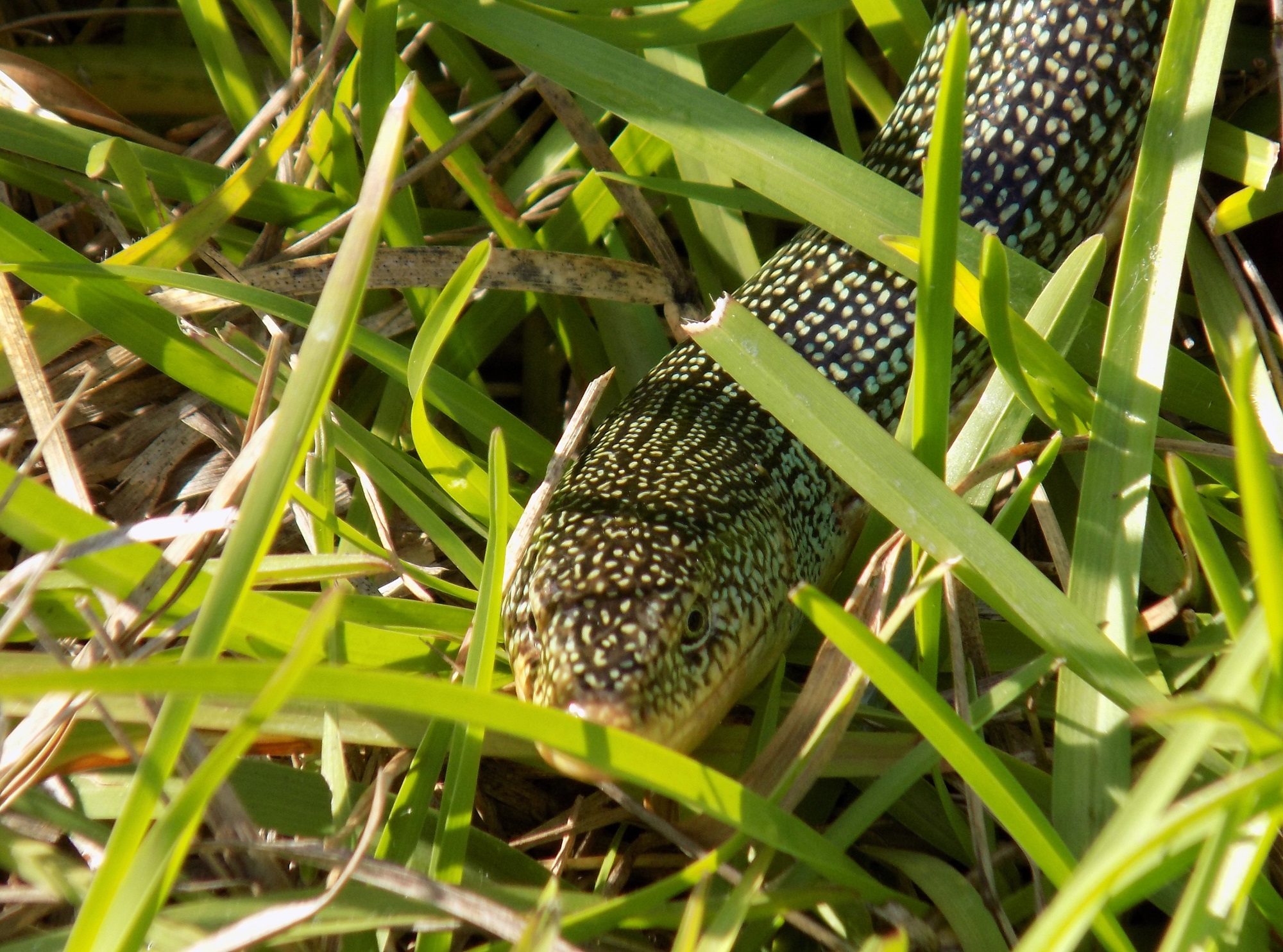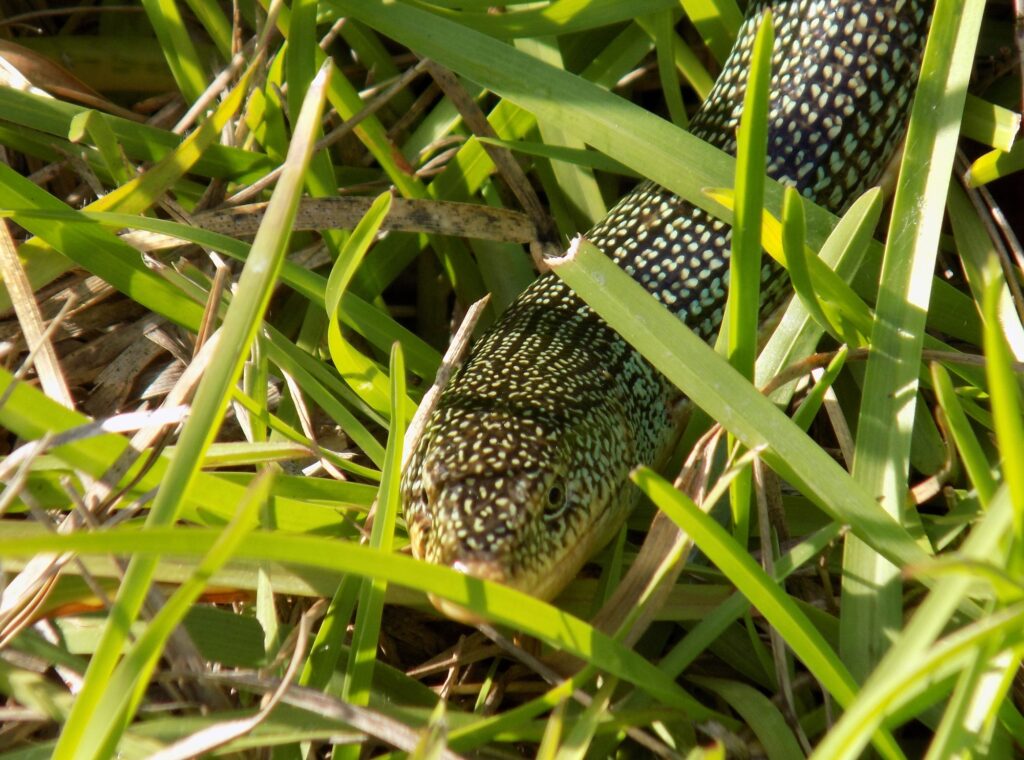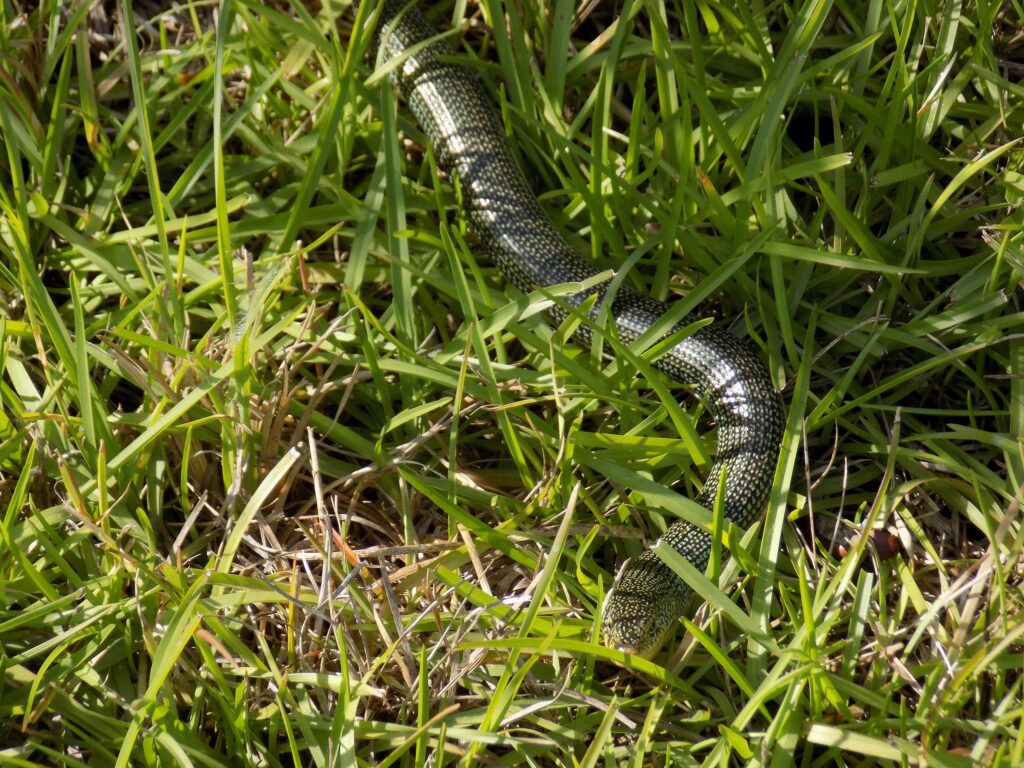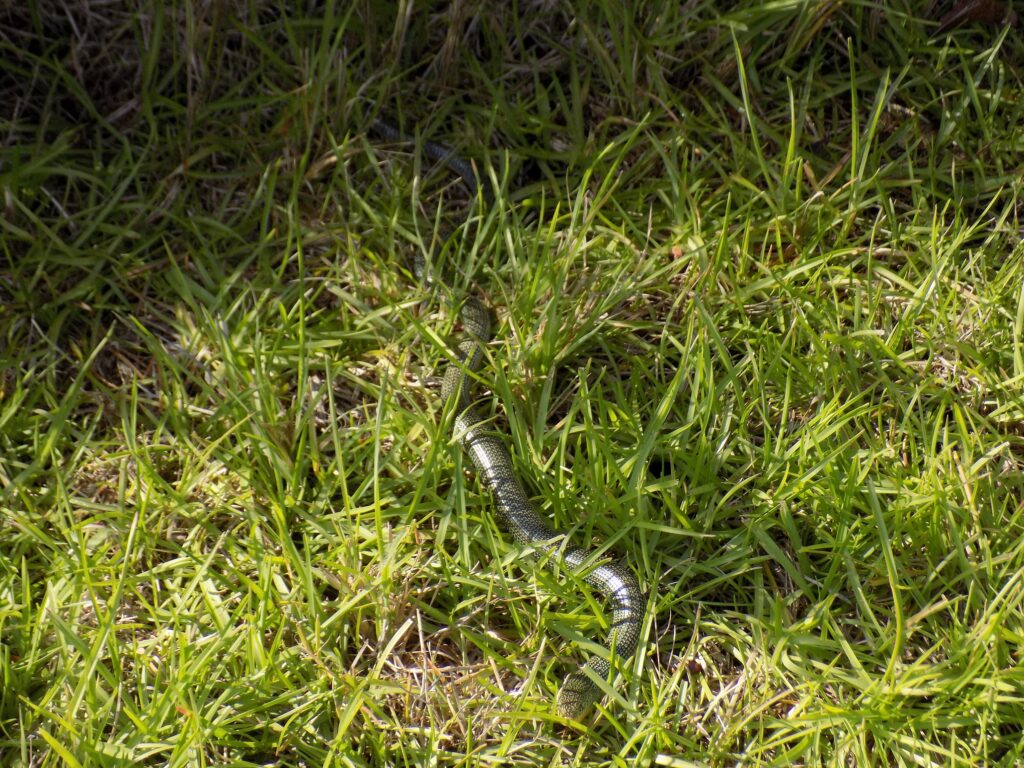



This week for Flora and Fauna Friday we have a fragile creepy crawly who’s often misinterpreted as a different rope-like reptile. This week we’re peering into the world of the Eastern Glass Lizard (Ophisaurus ventralis).
Glass Lizards, as the latter name implies, are a species of lizard. There are four Glass Lizard species in our area but the Eastern Glass Lizard is by far the most common. These lizards often misidentified as snakes due to their legless condition. However, I assure you, they are absolutely lizards and absolutely harmless. There are some distinct physiological differences between the two groups. Snakes have thin needle-like teeth, flexible jaws, and kill with venom or constriction. Glass Lizards have stout triangular teeth, strong inflexible jaws, and kill small critters with a crushing bite. Snakes can crawl by undulating their ribs or wriggling their entire body. Glass Lizards can only move by wriggling. Glass Lizards are not venomous and are totally harmless. Although, they can deliver a painful bite if mishandled.
The Eastern Glass Lizard is a large lizard with piercing eyes and a distinct lack of legs. This longitudinal lizard is thinly cylindrical in its general shape and can reach over 3 feet in length. The species is variable in coloration. Younger lizards are usually a warm brown on top striped with black and white along the sides. Adults can maintain that patterning but usually develop a blackened back studded with sea-foam flecks. All ages lack any dark stripes below the lateral groove. This is the best superficial feature to distinguish the Eastern Glass Lizard from the other three Glass Lizard species. Glass Lizards spend most of their time hunting beneath brush, debris, leaf litter, or amidst grass. They’re most often spotted when sunning out in the open. They use burrows excavated by other animals to escape into or hibernate within. Glass Lizards get their common name from one of their defense mechanisms. Glass Lizards primarily avoid predators by remaining motionless and then darting away at the last second. Although if cornered, they will violently wriggle, release a foul smelling musk, and then break in half. They can shed their tail in one or more pieces. (The amount of tail lost can be almost half their body length!) The ease with which they depart from their terminal appendage landed them the common moniker. The abandoned body part continues to wriggle after the schism. Usually, this sacrificial sausage is enough to satiate, or at least distract, a predator and allow the Glass Lizard to escape out of sight. The tail will regrow but will take several months to do so.